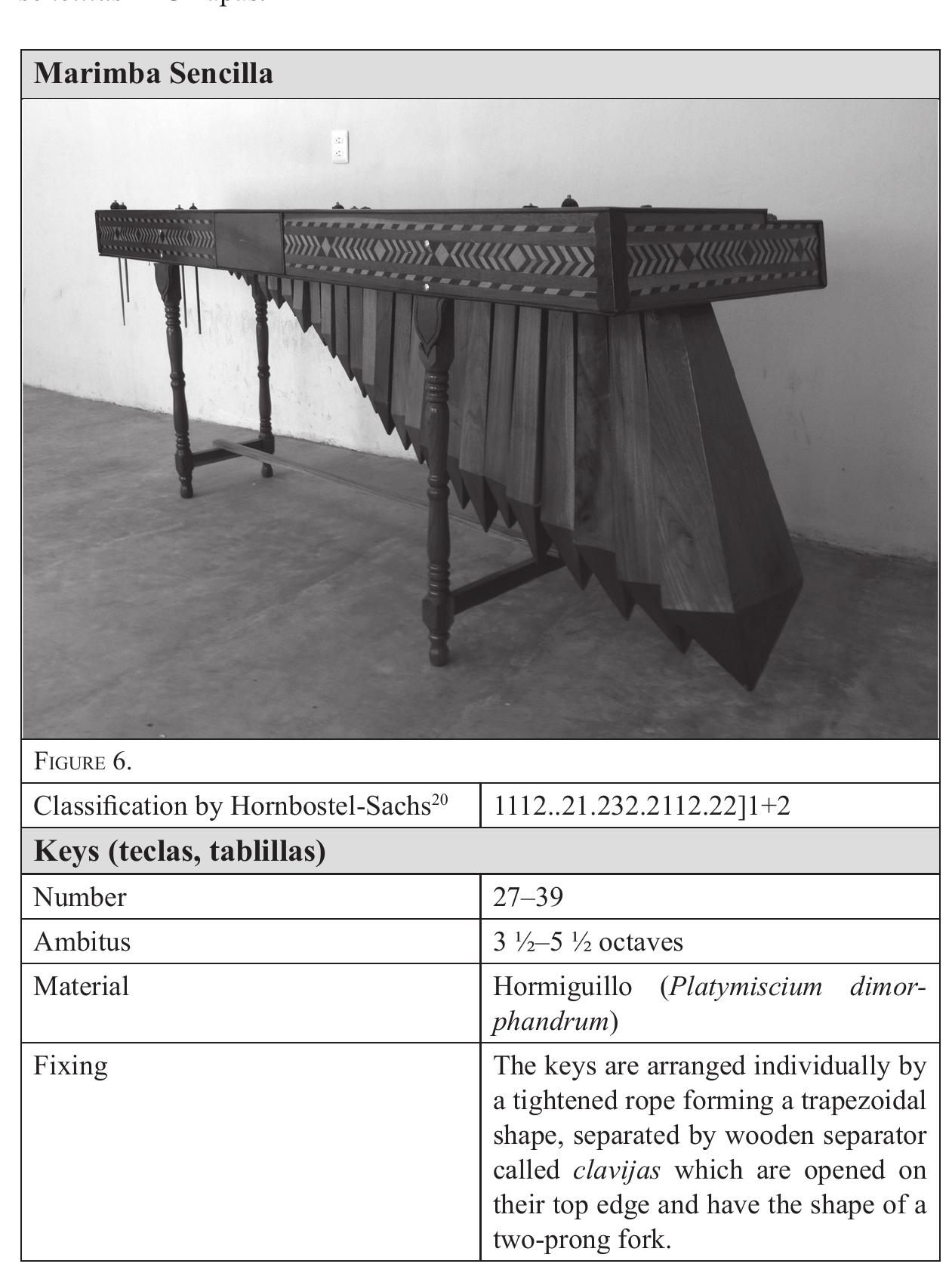The marimba is the (“traditional”) instrument par excellence in the Mexican state of Chiapas. Its current practices nowadays may range between participative and presentative performances, while its repertoire drifts between popular...
moreThe marimba is the (“traditional”) instrument par excellence in the Mexican state of Chiapas. Its current practices nowadays may range between participative and presentative performances, while its repertoire drifts between popular genres, such as música ranchera and bolero, along with contemporary music and jazz. Its roots and representativeness are such that it would give the impression of being omnipresent in the soundscape of the state. Nonetheless, there are two different kinds of marimba in Chiapas: on the one hand, the marimba doble –chromatic–, which is widely visible and, no doubt, the cultural symbol of the state; and, on the other hand, the marimba sencilla –diatonic–, whose status and visibility are almost non-existent. Whereas the marimba doble has found a niche within ethnomusicology research, the marimba sencilla has been utterly ignored, having been at times even considered to be extinct in the state. Notwithstanding, it continues to be not only present inside the state, but also an essential part of the identity of several social groups. This research focuses on such diatonic marimba tradition. Based on the information gathered during several research stays in the area, it attempts to offer a general scope of the dissemination and functioning, as well as of the various sociocultural interrelations of this musical tradition in the state of Chiapas. At the same time, being the first scientific research that is focused exclusively on this musical tradition, it aims to offer some groundwork for the development of future research which grant access to a deeper understanding of this musical tradition.
–——––––––
La marimba es el instrumento (“tradicional”) por excelencia en el estado mexicano de Chiapas. Sus prácticas actuales pueden oscilar entre performances participativos y presentacionales, al tiempo que su repertorio navega entre géneros populares, como música ranchera y bolero, y la música contemporánea, así como el jazz. Su arraigo y representatividad son tales que diera la impresión de ser omnipresente en el paisaje sonoro chiapaneco. En Chiapas existen, sin embargo, dos tipos de marimba: por un lado, la marimba doble –cromática–, la cual goza de una amplia visibilidad y es sin duda el símbolo cultural del estado. Y por el otro la marimba sencilla –diatónica–; esta última con un status y una visibilidad casi nulos. Si bien, la marimba doble ha encontrado un lugar en la investigación etnomusicológica, la marimba sencilla ha sido ignorada por completo, siendo en ocasiones considerada extinta en este estado. Sin embargo, esta sigue, no solo estando presente en el estado, sino que también sigue siendo una parte primordial de la identidad de diversos grupos sociales. El siguiente trabajo se encuentra enfocado a esta tradición marimbística diatónica. Basado en la información recabada durante diversas estancias de investigación en la zona, se busca dar una visión general de la diseminación y el funcionamiento, así como de las diversas interrelaciones socioculturales de esta tradición musical en el estado de Chiapas. Al mismo tiempo, al ser este el primer estudio científico enfocado exclusivamente a esta tradición musical, se busca sentar las bases para el desarrollo de futuras investigaciones que nos permitan acceder a un entendimiento profundo de esta tradición musical.
















































































